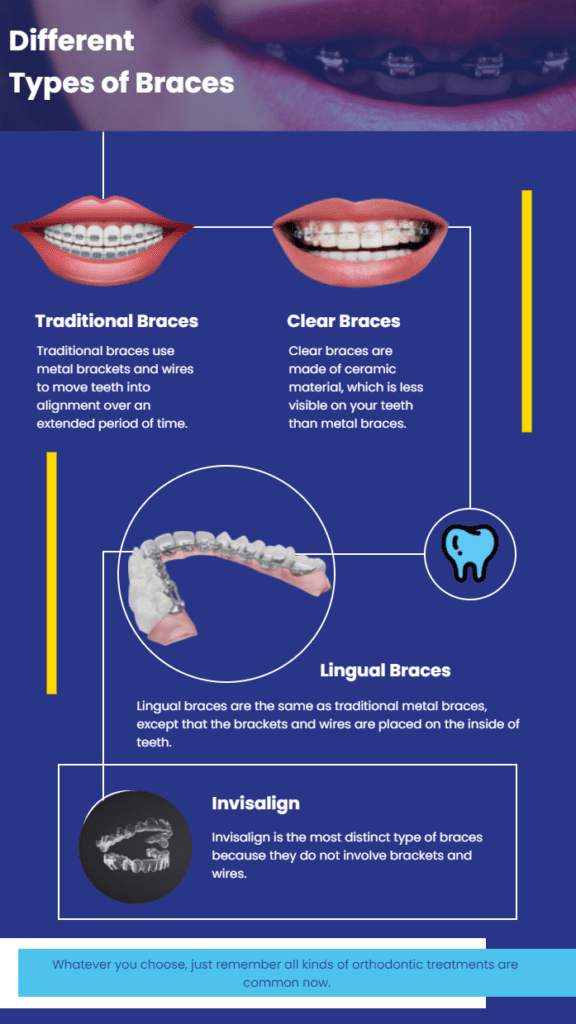Comprehensive Overview to Orthodontics Procedures for Dealing With Oral Misalignments
In the realm of orthodontics, the trip to achieving a perfectly aligned smile involves a myriad of treatments tailored to fix dental imbalances. From conventional braces to unnoticeable aligners and also surgical options, the field of orthodontics uses a variety of options to address varying degrees of dental irregularities. Recognizing the complexities of each procedure, including their mechanisms, benefits, and potential drawbacks, is vital in making informed choices concerning one's orthodontic therapy. As we browse through the detailed guide to orthodontic treatments for dealing with dental imbalances, the intricate details of each method will certainly unravel, clarifying the path toward a unified and functional oral alignment.
Orthodontic Procedures Introduction

Normal changes and surveillance are essential parts of orthodontic treatment to guarantee development is on track and to make any essential alterations along the method. By undertaking orthodontic procedures, clients can not only achieve a straighter grin yet also enhance their general oral health and function.
Typical Dental Braces: How They Work
When thinking about orthodontic therapies for oral misalignments, traditional dental braces stand out as a tried and true method for correcting teeth placing. Standard dental braces consist of brackets, cords, and bands that interact to apply continual stress on the teeth, gradually moving them right into the preferred positioning. The brackets are affixed to the teeth utilizing an unique adhesive, and the cables are threaded through the braces. By changing the tension of the wires, orthodontists can regulate the direction and force related to each tooth, leading them right into correct alignment in time.
One key aspect of just how traditional dental braces job is the procedure of bone remodeling. As pressure is put on the teeth with the dental braces, the bone bordering the teeth is improved to sustain the new tooth positions. This renovation is essential for the lasting security of the dealt with placement. Patients will certainly require regular adjustments at the orthodontist's office to ensure the dental braces remain to apply the appropriate pressure for reliable teeth movement.
Undetectable Aligners: Cons and pros
Undetectable aligners supply a practical and very discreet choice to conventional dental braces for correcting oral misalignments. These clear, tailor-made trays are essentially undetectable when used, making them an enticing alternative for individuals looking for a much more cosmetically pleasing orthodontic therapy. One of the main advantages of unseen aligners is their removability, enabling less complicated maintenance of dental hygiene compared to traditional braces. Individuals can eliminate the aligners before consuming or cleaning their teeth, minimizing the risk of food getting stuck in the appliance and simplifying the cleaning process.

Surgical Orthodontic Options
Surgical treatments in orthodontics present viable alternatives for addressing complex dental misalignments that might not be effectively dealt with with traditional orthodontic therapies. While conventional braces and invisible aligners can correct many orthodontic issues, specific situations call for medical intervention to accomplish optimum results. Surgical orthodontic options are typically recommended for serious malocclusions, substantial jaw inconsistencies, and situations where the underlying bone structure needs alteration to achieve correct positioning.
One common medical orthodontic treatment is orthognathic surgical procedure, which includes repositioning the jaws to remedy practical concerns such as difficulty eating or speaking. This surgery is usually executed in cooperation with an orthodontist who helps align the teeth prior to and after the procedure. Surgical orthodontics might also involve procedures to reveal influenced teeth, eliminate excess periodontal cells, or improve the jawbone to develop an extra harmonious facial profile.
Before taking into consideration medical orthodontic choices, people undergo a thorough analysis to identify the necessity and possible advantages of such interventions. cumming braces. While surgery may seem difficult, it can substantially boost both the feature and looks of the smile in situations where traditional orthodontic therapies drop short
Retainers and Post-Treatment Treatment

Failure to conform with post-treatment care guidelines can result in regression, where the teeth gradually relocate back towards their initial positions. Regular retainer wear, good dental hygiene, and regular dental check-ups are vital for maintaining the outcomes achieved through orthodontic surgical treatment and dental implant systems making certain the long-term security of the corrected dental alignment.
Final Thought
In conclusion, orthodontic treatments provide different options for correcting oral misalignments. Surgical orthodontic alternatives are offered for much more extreme misalignments. Overall, orthodontic treatments can effectively enhance oral health and wellness and visual appearance.
As we browse via the detailed overview to orthodontic procedures for remedying dental imbalances, the complex information of each approach will certainly unravel, shedding light on the course towards a practical and harmonious dental alignment. - aligners
One of the most typical orthodontic therapies is the usage of braces, which consist of metal brackets and cords that use gentle pressure to gradually shift teeth right into the wanted position.When taking into consideration orthodontic therapies for oral imbalances, traditional braces stand out as a tried and true technique for fixing teeth positioning. In addition, invisible aligners might not be appropriate for complex orthodontic concerns that need even more substantial teeth activity, as they are commonly suggested for mild to modest instances. Retainers are tailor-made orthodontic tools created to hold teeth in their remedied positions after the conclusion of orthodontic treatment.